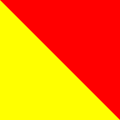This article needs additional citations for verification .(November 2022) |
| O | |
|---|---|
| O o | |
 | |
| Usage | |
| Writing system | Latin script |
| Type | Alphabetic |
| Language of origin | Latin language |
| Sound values | |
| In Unicode | U+004F, U+006F |
| Alphabetical position | 15 |
| History | |
| Development | |
| Time period | c. 700 BCE to present |
| Descendants | |
| Sisters | |
| Other | |
| Associated graphs | o(x) |
| Writing direction | Left-to-right |
| |
| ISO basic Latin alphabet |
|---|
| Aa Bb Cc Dd Ee Ff Gg Hh Ii Jj Kk Ll Mm Nn Oo Pp Qq Rr Ss Tt Uu Vv Ww Xx Yy Zz |
O, or o, is the fifteenth letter and the fourth vowel letter of the Latin alphabet, used in the modern English alphabet, the alphabets of other western European languages and others worldwide. Its name in English is o (pronounced /ˈoʊ/ ⓘ ), plural oes. [1]
Contents
- Name
- History
- Use in writing systems
- English
- Other languages
- Other systems
- Other uses
- Related characters
- Descendants and related characters in the Latin alphabet
- Derived signs, symbols and abbreviations
- Ancestors and siblings in other alphabets
- Other representations
- Computing
- Other
- See also
- Notes
- References
- External links






